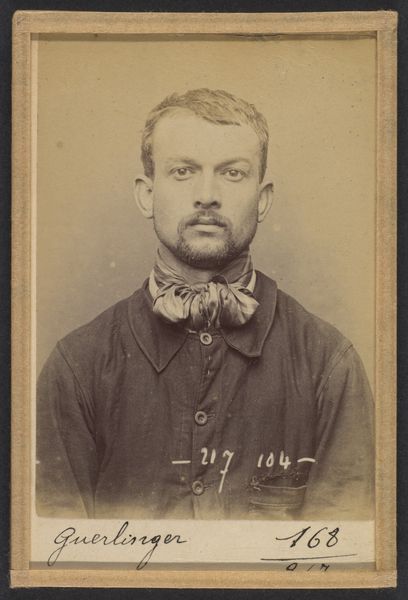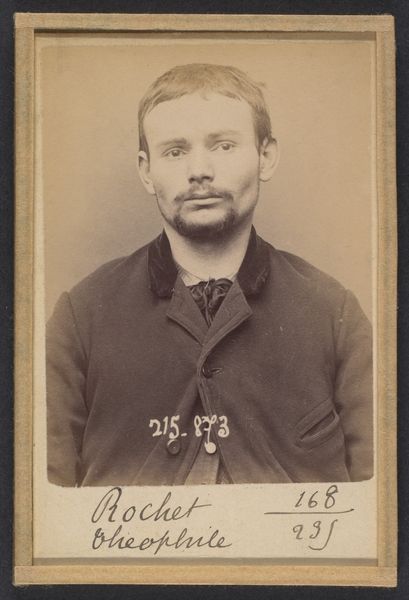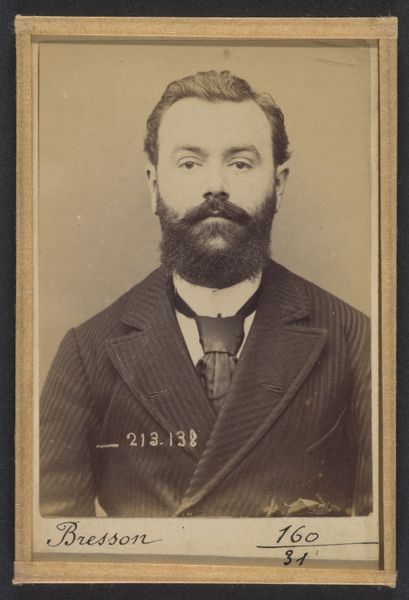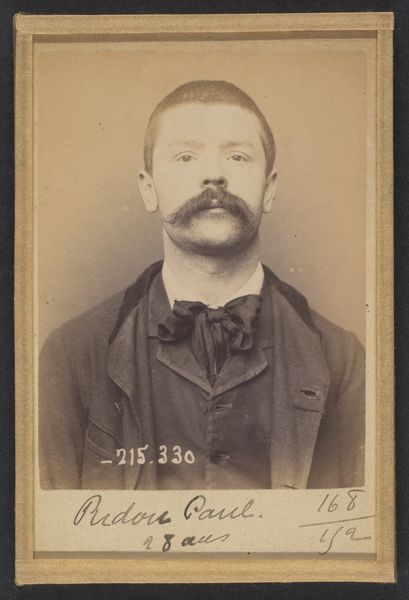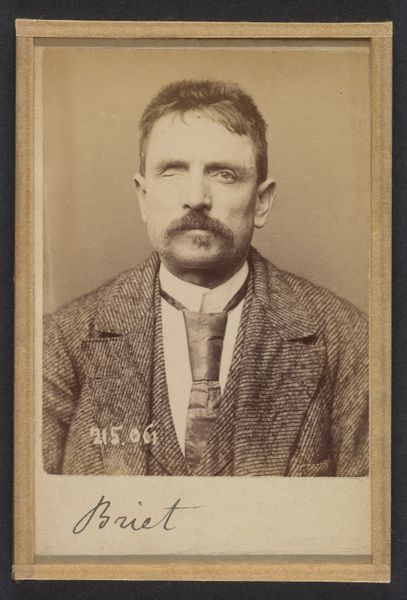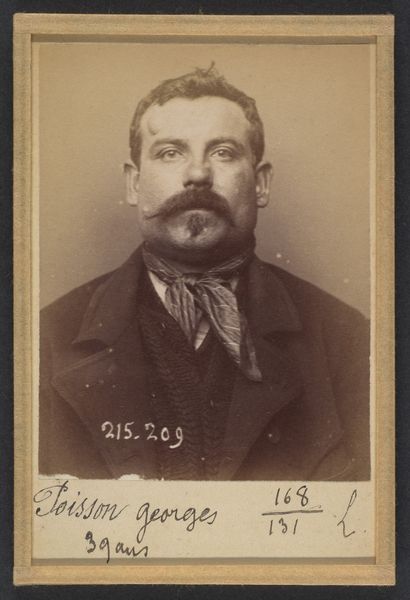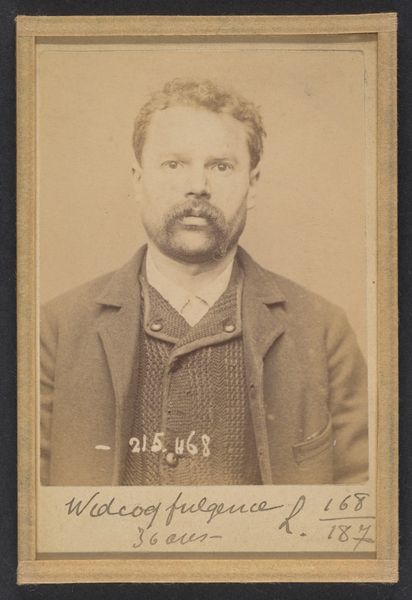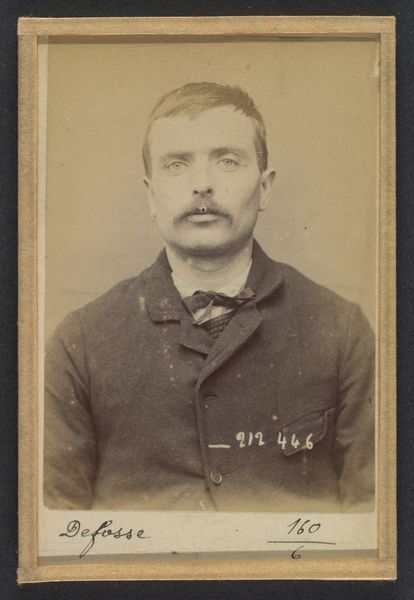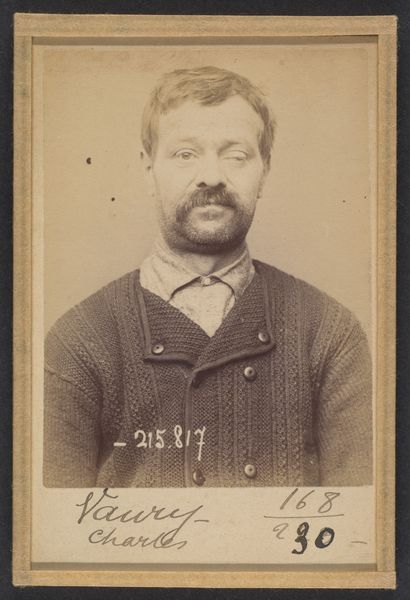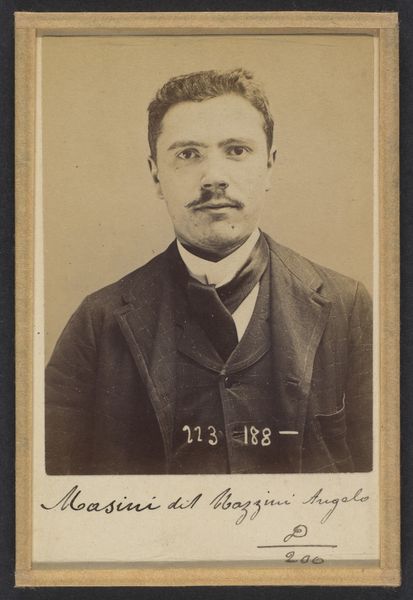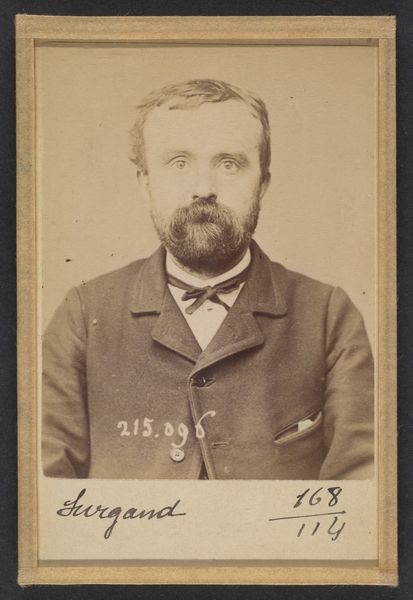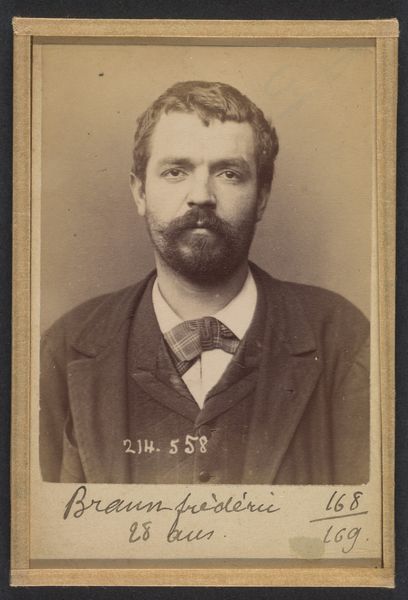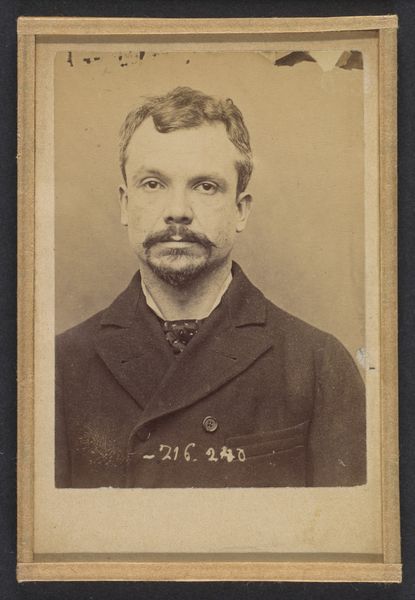
Rey. Claude. 23 ans, né le 24/5/70 au Creusot (Saone & Loire). Ébéniste. Anarchiste. 12/3/94. 1894
0:00
0:00
daguerreotype, photography
#
portrait
#
portrait
#
daguerreotype
#
photography
#
realism
Dimensions: 10.5 x 7 x 0.5 cm (4 1/8 x 2 3/4 x 3/16 in.) each
Copyright: Public Domain
Editor: Here we have a rather sobering daguerreotype by Alphonse Bertillon from 1894. It's titled "Rey. Claude. 23 ans..." and goes on to list his profession and political affiliation. It’s a portrait, but so unlike what we typically think of as a portrait. What do you make of this, considering its original purpose? Curator: This isn’t portraiture in the traditional sense. The materials, the daguerreotype process, the stark composition, all speak to its true function: surveillance and control. Bertillon was standardizing a new system of criminal identification. Consider the labor involved – the sitter, the photographer, the record keepers. How does this image serve the purposes of the state? Editor: That's fascinating. I hadn’t considered the sheer labor and almost industrial aspect to it. The subject's listed as an 'ébéniste,' a cabinetmaker, and an anarchist. Does this give us insight into why Bertillon chose to capture him in this way? Curator: Precisely! His craftsmanship, his labor, becomes suspect. His anarchism threatens the established social order and its modes of production. Bertillon’s system aimed to quantify and categorize individuals who were deemed a threat. The very materials of this image—photographic chemicals, paper—become tools of social engineering. Does that categorization negate his individuality, do you think? Editor: I think it’s intended to. Knowing his trade, "ébéniste," makes the whole system seem even more dehumanizing. It reduces him to data. I’ve certainly gained a deeper appreciation of photography as a social and political tool. Curator: And understanding art through the lens of labor and materials brings forward unspoken perspectives. The 'portrait' reveals its place as evidence, shaped by the prevailing structures of power and methods of enforcement.
Comments
No comments
Be the first to comment and join the conversation on the ultimate creative platform.
